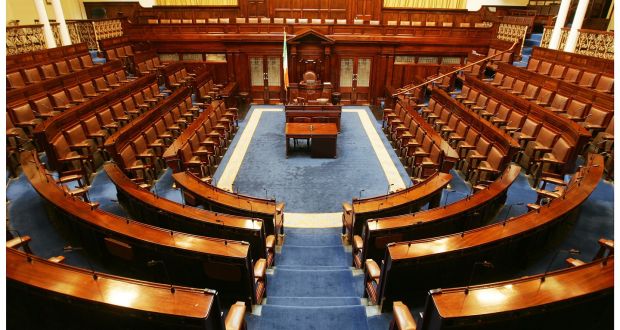The Supreme Court ruled that it is constitutional for the Oireachtas to prohibit by law the Government from filling any vacancy in judicial office from the Chief Justice to District Court judge unless the person appointed appears on a short list drawn up by the Judicial Appointments Commission.
But it appears that the Bill (now an Act) was only rescued from a finding of unconstitutionality by an interpretation of section 51 of the Bill which allows the Government to completely reject a short list if it chooses not to appoint of any of the persons named.
If the Government declines to appoint any of the shortlisted applicants, the Supreme Court ruled, it can legally do so by simply asking the Commission to re-run its selection process from scratch. The court found that the Bill created no legal obligation to appoint from the shortlist submitted if the Government was averse to doing so.
This possibility was never even mentioned during the two years that the Bill was before the Oireachtas. Nor was it even hinted at. If it had been, there would have been major controversy as to what would actually happen in such circumstances, and the Bill would undoubtedly have been amended to provide for such a scenario.
To take an example, in the case of a vacancy as Chief Justice there might be, say, six applications by senior judges including serving Supreme Court members. If the Government disagreed with the Commission’s three-person shortlist and strongly favoured one of the unsuccessful applicants, it could, on the Supreme Court’s interpretation of the Bill, decline to appoint any of the three, and ask the Commission to re-run the entire process beginning with re-advertisement. But to what end?
If no new applicants came forward, what would happen to those three whose appointment had been recommended but declined by the Government?
The Commission is required to be “independent” and to make its shortlist on its independent judgment of the merits of the six applicants. Is it to re-evaluate the merits, and submit different names? Would rejected shortlisted applicants be told they were no longer in the running and should not re-apply? Could they keep their applications alive in the hope that one or more of those not shortlisted would withdraw?
Could the position of Chief Justice remain vacant unless and until the name of the applicant favoured by Government appeared on a second or subsequent shortlist after re-advertising the vacancy on one or more occasions? Would that kind of publicly known standoff conduce to the public’s confidence in the appointments process?
The Supreme Court’s interpretation relied heavily on section 47(5) of the Bill which obliges the Commission to inform the Minister of the names of all unsuccessful applicants. The court stated that section 47(5) suggested that the Government “may still have a need to know if there were other candidates and, if so, who they were. It is hard to see why the Minister could have any need for this information if it were not to be used to decide notto proceed with an appointment on the basis of the list forwarded by the Commission”.
But, very strangely, on 7th March 2023 when I queried why section 47(5) was included in the Bill if the Government had no remaining discretion, the Seanad was given a diametrically opposite justification.
Minister James Browne said: “Receiving all names will allow the Minister to assess in time the level of applications for a particular area, the range of persons and the professions of the applicants and whether it is likely that the diversity goals will be met. It is more for statistical purposes than anything”. Minister McEntee had said something similar on 5th October 2022.
The purpose and significance of that provision relied on by the Supreme Court as demonstrating the intention of the Bill had been contradicted by Government in the Oireachtas more than once.
This raises further questions of fundamental importance.
Was the Cabinet, when it originally authorised the Bill, informed by memorandum that it was drafted, and intended, to allow future governments reject shortlists drawn up by the Commission? If not, why not?
If the Bill was tabled in the Oireachtas on the Government’s understanding that it would remain free to reject any shortlist, why was that actively concealed from all members of the Oireachtas who queried its constitutionality?
Or was it simply that the interpretation first put forward in the Attorney General’s written submissions on section 51 was only devised as an afterthought to escape a finding of unconstitutionality when the Bill was referred by the President under Article 26?
Would we ever have heard any suggestion of the right of the Cabinet to reject any shortlist if there had been no Article 26 reference?
The Attorney General was also willing to argue in the alternative that ending the current mode of appointing Irish judges was necessitated by EU law. Happily, that argument was soundly rejected by the Supreme Court.
The Act, saved by the scruff of its constitutional neck by finding that the cabinet can reject Commission shortlists, still remains very problematical.
As long as the Act is in force, the judiciary are now made effectively self-selecting because nobody can now become a judge or be appointed to any higher judicial office without a recommendation from the judge-dominated commission. Will that outcome improve the judiciary’s standing in a democracy over time?
Is it conducive to judicial independence that individual judges must apply to other senior judges to be recommended for higher office?
Practising lawyers in future will only be eligible for appointment as judges if serving judges say so. What are the implications of that for members of the legal professions and the rights of their citizen clients?
The Act, of course, can be amended in future to avoid some of its more damaging consequences. As saved by the Supreme Court majority, it is somewhat of a “dog dinner”, as another Bill was described.

